Pikes Peak Is the Only Place Where Formula Libre Racing Without Rules Still Exists
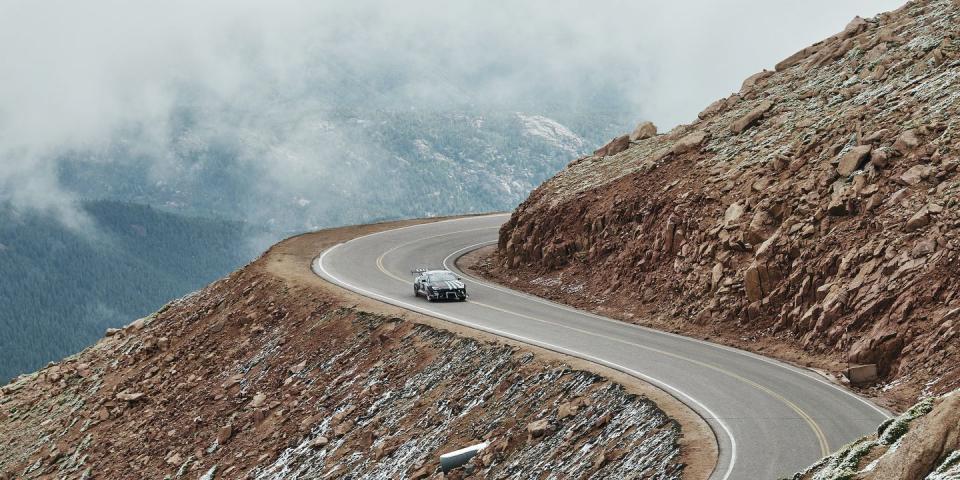
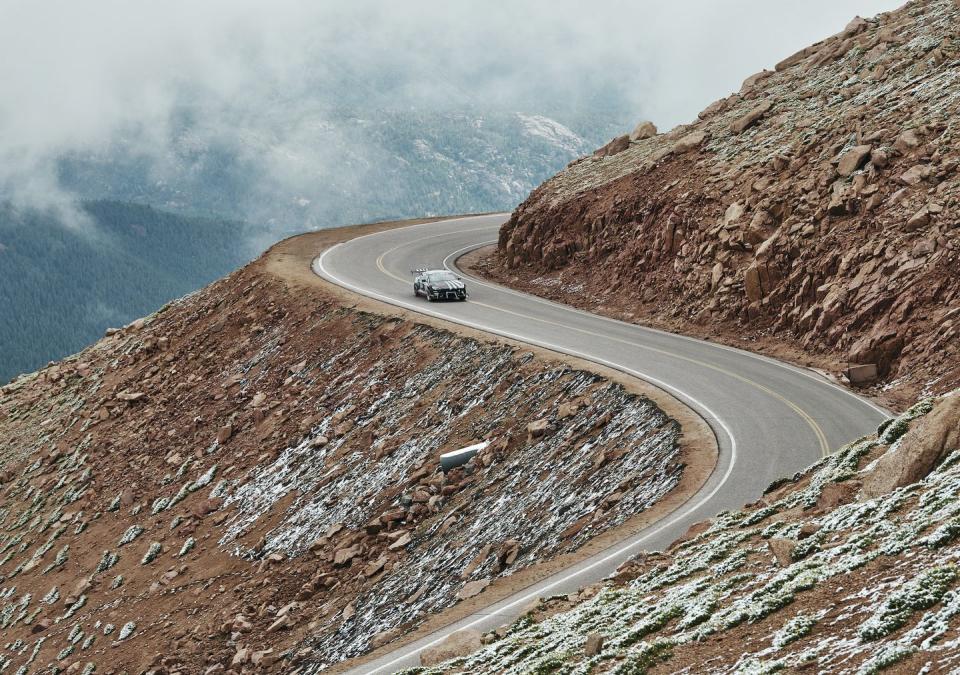
There’s a bear with her two cubs up a tree above the Pikes Peak International Hill Climb pit area. “They’re likely not here for the racing,” says some guy who happens to be within earshot of me.“But they probably have a pretty good view from up there. At least as good as anyone else’s.”
Have bears wandered around Daytona? Or Indianapolis? Maybe there are some at the Nürburgring? Maybe. But at Pikes Peak, bears are a shoulder-shrug experience. This is where anything can and does happen.
This story originally appeared in Volume 7 of Road & Track.
SIGN UP FOR THE TRACK CLUB BY R&T FOR MORE EXCLUSIVE STORIES
The Pikes Peak Hill Climb is racing almost without restriction. The Unlimited Division’s “rules” are 64 words of comedy gold. Three sentences. “The Director of Competition will determine the eligibility of a vehicle for the Unlimited Division,”the rules begin. “This division will allow any race vehicle invited by PPIHC, and capable of challenging for the overall win, to take part in this Unlimited Division,” goes the second sentence. So, if it looks fast, it’s in. Finally: “All vehicles must be race-ready and meet safety requirements as outlined in Technical Regulations and Special Rules and must adhere to General Competition Rules.” So make it safe enough. Safeish. That’s it.
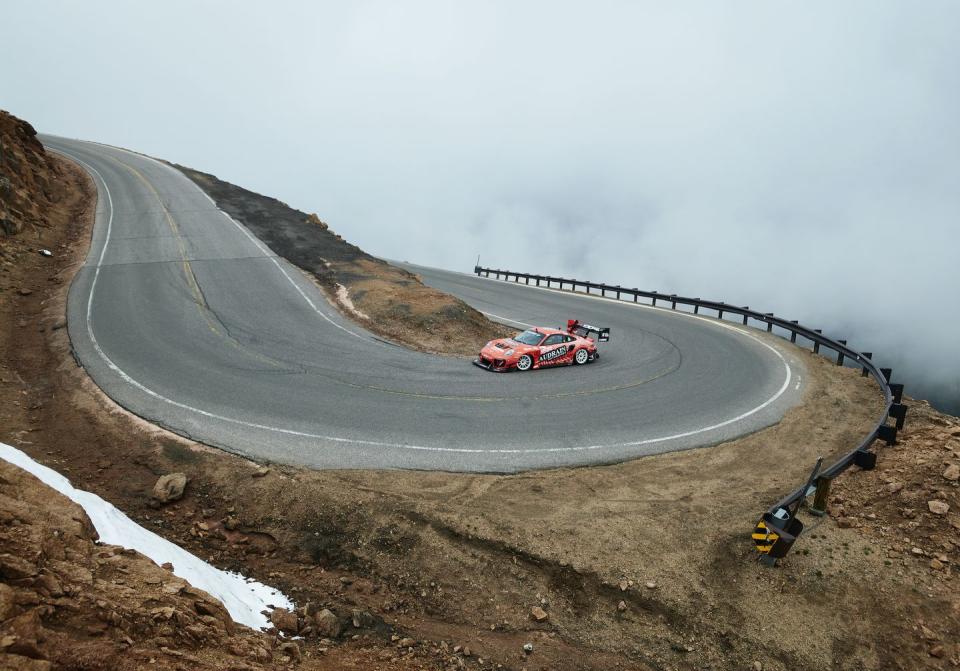
Rules for the Exhibition Division are even shorter—but no records can be set there. It’s a catch-all. The Open Wheel and Open divisions are only slightly more restrictive.
Go download the Formula 1 regulations from the FIA website. Over five parts, the PDFs run to 288 pages. Restrictor plates, aerodynamic kludges, reduced tire sizes, arbitrary chicanes—big-time racing is scared of freedom.
"It’s the weirdest race on earth,” veteran driver Robb Holland explained during this year’s 99th running of the Hill Climb in late June. “Everything you expect at a race isn’t here. It’s laid-back, but once you’ve run, you’re stuck on the mountain the rest of the day. Rules? What rules?”
Pikes Peak isn’t broadcast on TV. It takes place on a mountain without grandstands. There’s no wheel-to-wheel racing. Only bits and pieces of the 12.4-mile, 156-turn course are visible from any one spot. And the climb to the top involves a 4725-foot elevation gain. No matter how balmy it is at the start line, there can be a blizzard at the summit. Or at least fog as thick as whole milk.
What shows up to race is machinery ranging from motley to monstrous, a Cambrian explosion of odd forms and unexpected talents. On occasion, the factories show up with an engineering marvel and a huge budget. But the heart of the event is the misfit toys—the improvised, budget-built contraptions willed to life by an individual’s manifest passion.
“Here, have a keychain,” Wisconsin’s Don Wickstrum insists as he presses three of them into my hand. He bills himself as the “Fastest Pastor” with entrepreneurial Christian zeal. The trinkets feature his “I’m Second” branding that puts Jesus always atop the podium. This is not the right venue to assess theological soundness.
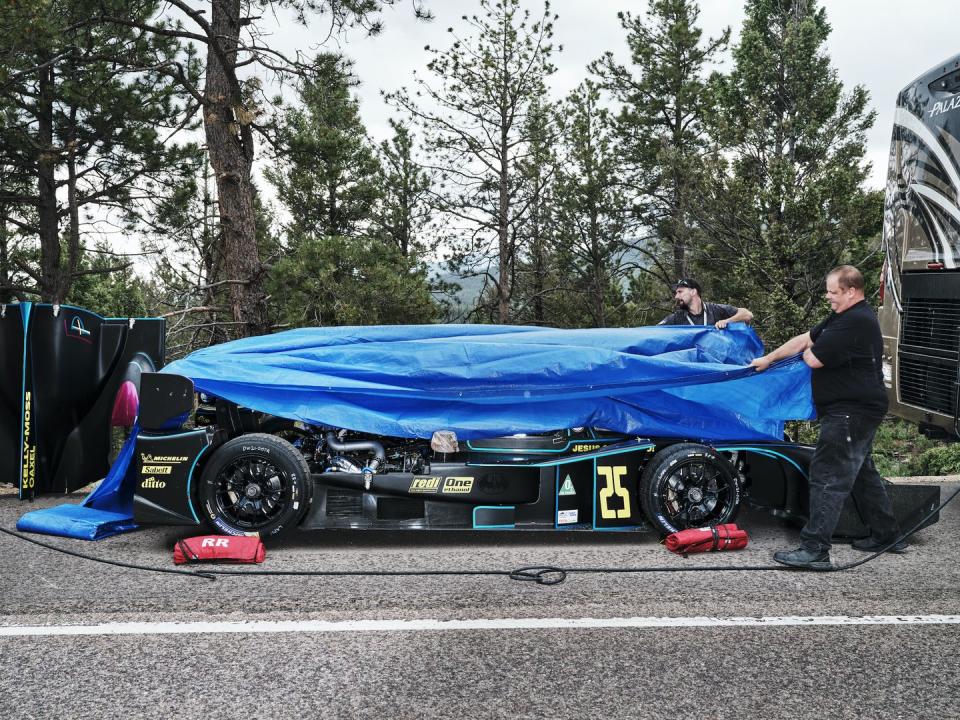
Wickstrum is standing next to his 2016 Riley LMP3, an obsolete IMSA LMP racer repurposed for Pikes Peak ascent in the Unlimited class. “We revised the front suspension geometry to get around the tight turns. And added a bunch more aero.” Power comes from the Nissan 5.3-liter twin-turbocharged V-8 that’s always lived there. By IMSA standards it’s an old car. Here, along the side of Pikes Peak Highway, it’s the Millennium Falcon.
The pastor explains that he made his fortune with a robotics company before being diagnosed with colon cancer in 2018 and beginning his ministry. So, it isn’t his church’s money backing the conquest of this particular Death Star
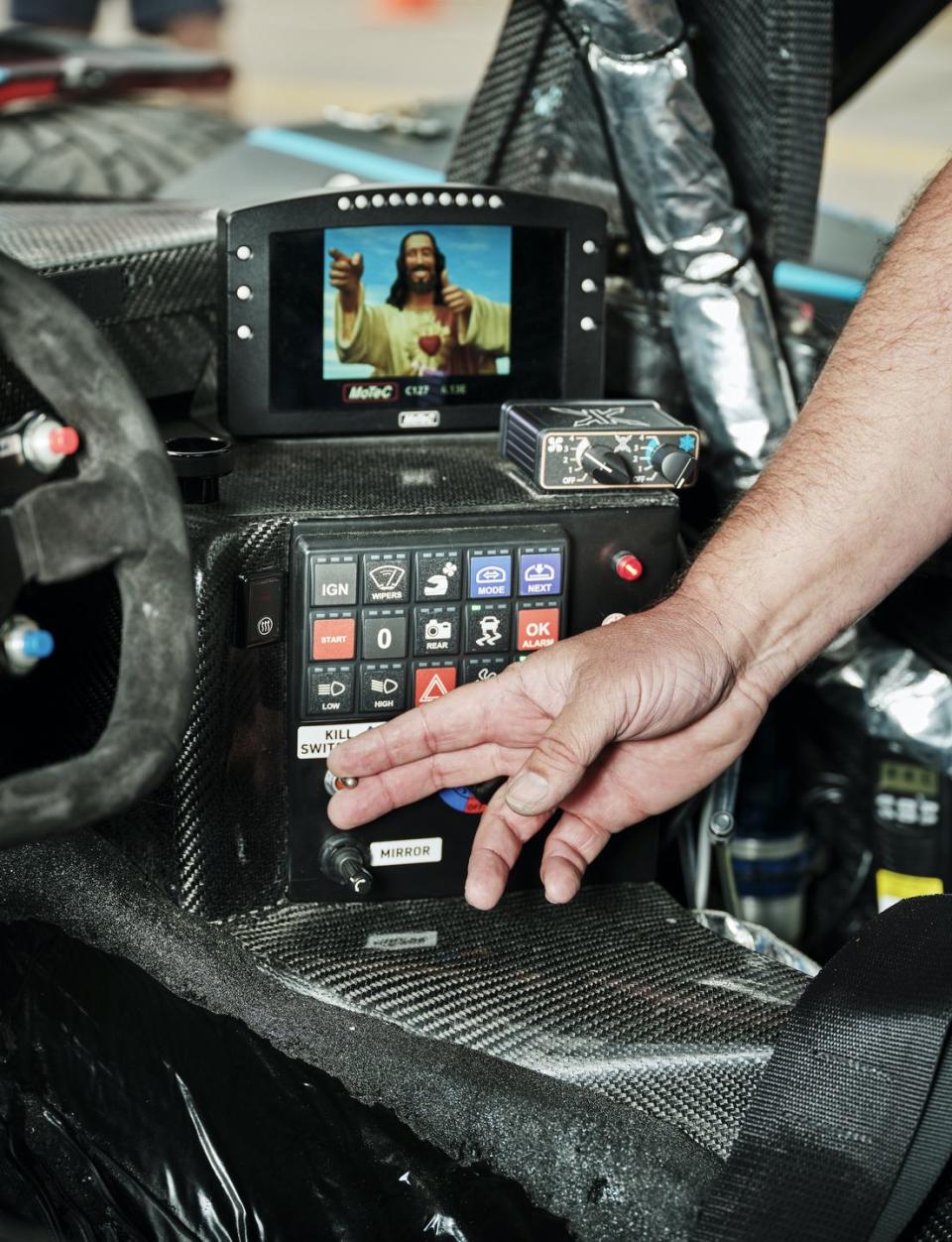
More typical—but not really typical of any-thing—is Boxeer Diesel Motorsports and Overlanding’s ancient VW Beetle that is powered by a mid-mounted TDI diesel four with three turbos and wears a rear wing roughly the size of a banquet table. It weighs practically nothing, uses a Porsche gearbox, and is instantly lovable. It’s Herbie the Love Bug with extra-sooty snot. It’s running in Exhibition, where any record it sets will be recognized only by the team itself.
Alongside the bastard Beetle in Exhibition is Shawn Bassett’s homebuilt 1972 Datsun 240Z, a tube-frame beast covered in carbon-fiber panels and powered by a turbocharged GM LS-series V-8. There’s not really any 240Z left, Bassett says. But it still kinda-sorta looks like one.
Pikes Peak isn’t a racetrack, and there’s no Bill France or Bernie Ecclestone counting gate receipts or negotiating international TV rights. There are only five full-time employees running out of a small office and 100 or so volunteers who come together for race week every year to position the port-a-pot-ties and keep the several thousand scattered spectators from wandering in front of race cars. There are no permanent facilities; the pits are the Catamount Reservoir parking lot, and many tow vehicles hide amid the trees. Despite the Hill Climb’s lofty profile, it’s run at a grassroots level.
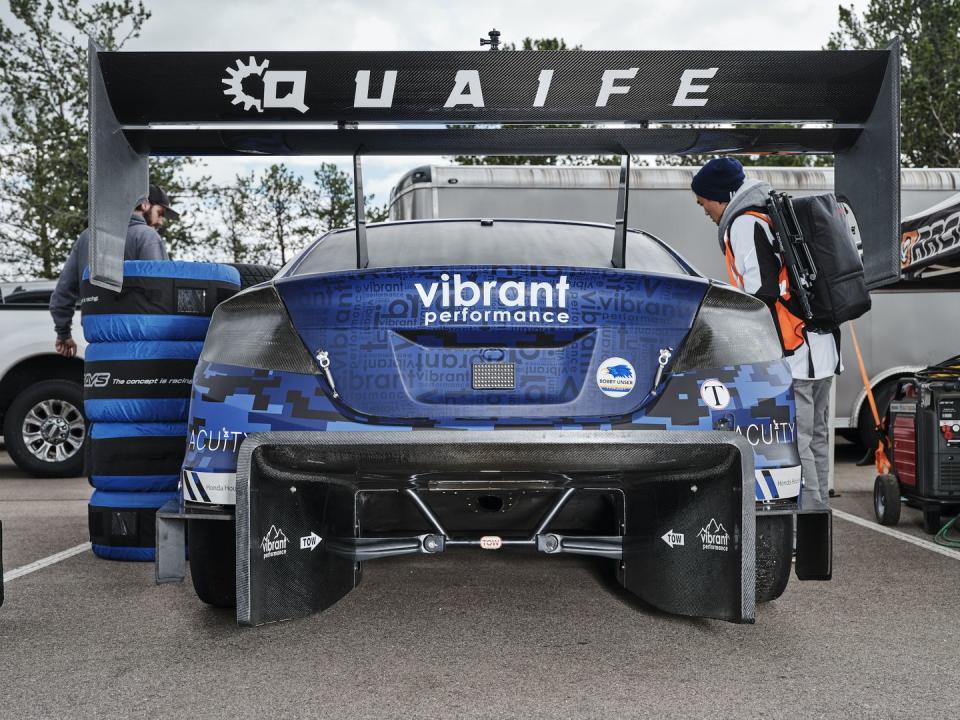
Dan Skokan, 60, the director of competition and a graduate of nearby Manitou Springs High School, decides who gets to race. “Randy [Ruyle] was the race director, and we were best friends in high school,” Skokan explains. “He married into the Sanborn family. And Dick Sanborn was the race director for years back when Chevy was a major sponsor. So, Randy married Dick’s daughter, and Randy’s dad had run up there. So, he asked me 15 years ago if I were interested to come help out. I told him, ‘I don’t really have a racing background. "That’s okay,’ he said. ‘Just come on down and you’ll pick it up as you go.’ That’s how it started.”
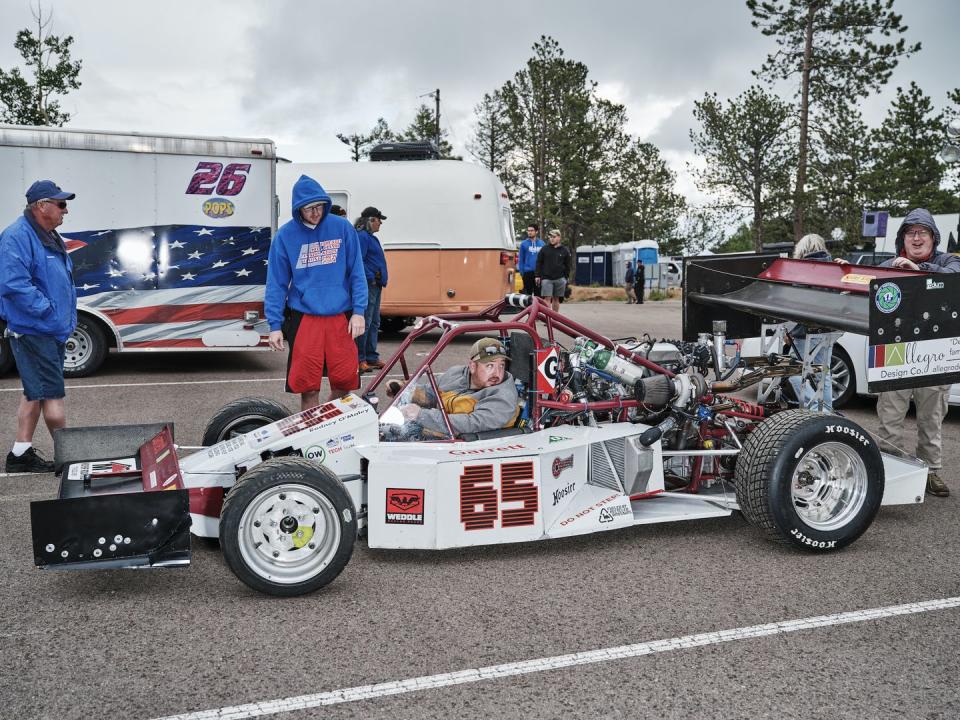
Safety, not close competition or a good show, is the controlling interest for the PPIHC.
“We very seldom have to disqualify people,”explains Skokan. The most common concerns are the quality and materials of safety cages. Even then, potential competitors have a chance to go back and get their machines in satisfactory condition. “I don’t think we’ve ever fully disqualified anyone.”
The Pikes Peak Highway is a toll road maintained by the city of Colorado Springs. The PPIHC organization rents it from the city for the race. On any day that isn’t race day, 12 bucks will buy a pass to drive to the summit. Yes, it’s now fully paved. That means speeds are up. Launch off the Peak now and a car may not simply tumble down to the bottom. With enough velocity, it might instead fly out and hit another mountain.
“Do you mind if I get my guy in here for our You-Tube channel?” Cody Loveland asks before starting his interview. “Let’s go someplace quieter so my guy can film.” Pikes Peak is made for YouTube. Or YouTube was made for Pikes Peak. One or the other.
Loveland, who is from Buckley, Michigan, modestly calls the Unlimited-class car he built the Enviate Hypercar Evolution, and it looks the part of a high-tech, mid-engine prototype. “I started the build in 2018, and the first time the car drove was ten days before the event. And that was just me doing laps around an eighth-mile oval. That was the only shakedown the car had before we left for Colorado.”Though the Enviate was constructed in Loveland’s shop, the design was an international conspiracy. “Sebastien Lamour—he is an engineer, Alfa Romeo Racing, the F1 team—and his teammate Manuel Greiner have been key in the car’s design. Sebastien has done all the aero work and a lot of the chassis dynamics. And Manuel has helped a lot with setup. They’re the engineers. I’m just a guy with a welder, and I know how to stitch stuff together.” How did all this international cooperation come together? “Facebook,” explains Loveland.
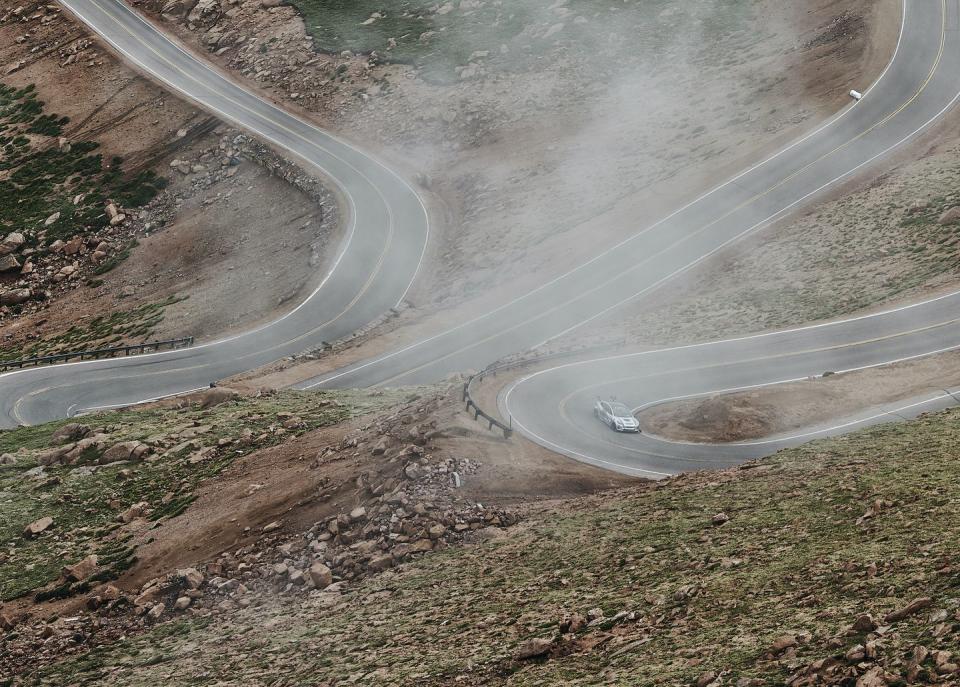
If anything, the Enviate is too powerful. The 7.0-liter engine is built by Supercar System around a billet LS-style V-8 block fed by a massive Garrett supercharger. The engine builder says it’s capable of producing 2200 hp. “At low boost it’s making well over 800 hp,” says Loveland. But with driver Paul Gerrard in the car during practice, a wheel nut came off. “We’re running a center-lock system, and we ran the same system in 2017. But this car is a bit more of a monster. Basically, what we discovered was that we overpowered the design.” The car wasn’t able to run on race day.
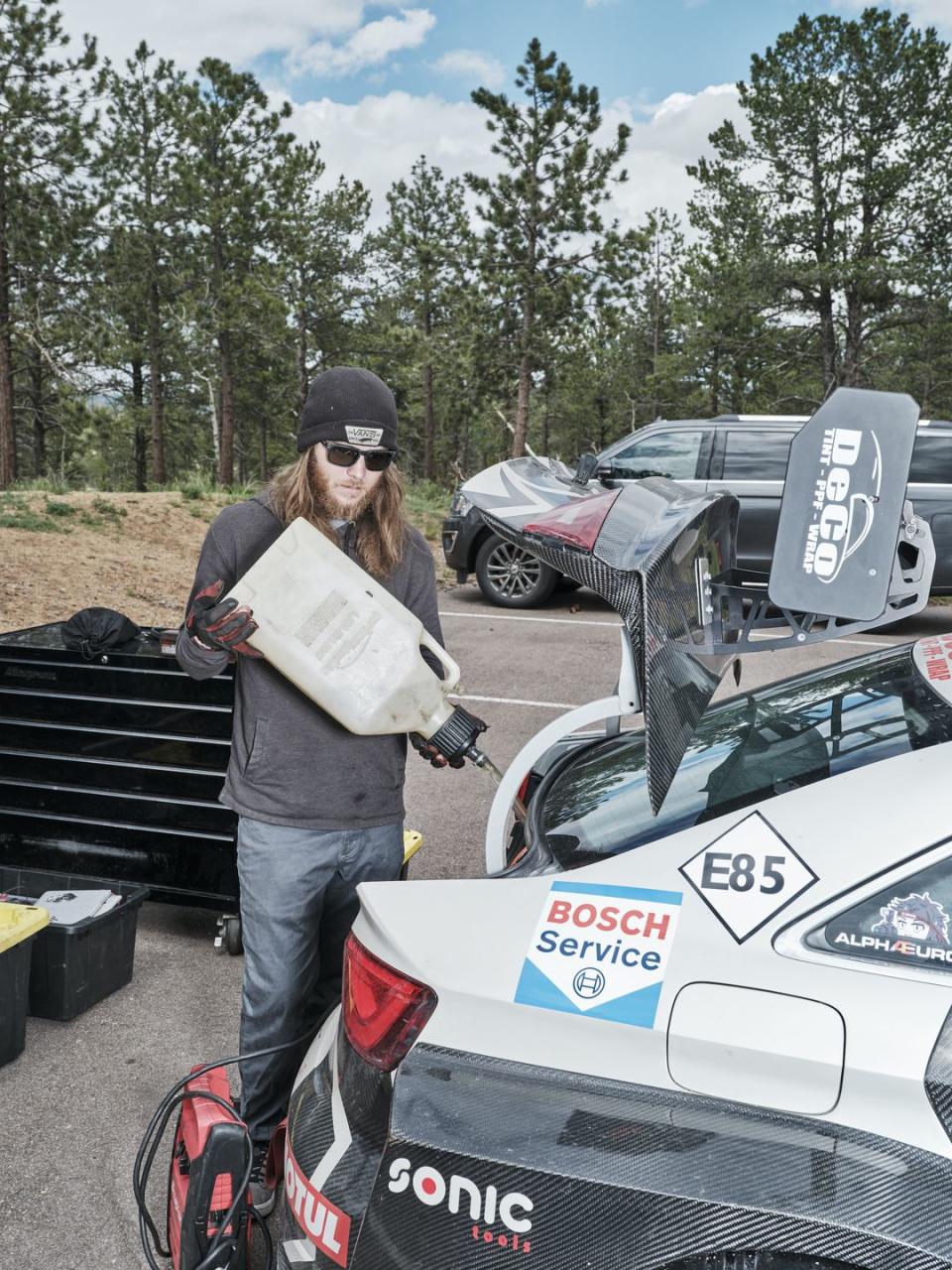
It’s happened before. As laissez faire as PikesPeak remains, Formula Libre always threatens to go too far. The SCCA Can Am was run almost without restrictions until Jim Hall entered, in 1970, a Chaparral that used a snowmobile engine and fan to suck it to the ground. Then Porsche wiped out the series a few years later with that turbocharged 1600-hp maniac, the 917/30. The NHRA had to cut its drag races down from a quarter-mile to 1000 feet in 2008 because the Top Fuelers and Funny Cars were going too damn fast. Speed may someday overwhelm the mountain.
While the weather was clear at the mountain’s start line on race-day Sunday, the summit was at zero visibility. The course was shortened by more than three miles so everyone would at least have a chance to run. But no records would be set, and the competition became more of a fun run—a fast, scary fun run along the rim of the Rockies. Instead of 10 minutes being fast, six became the benchmark.
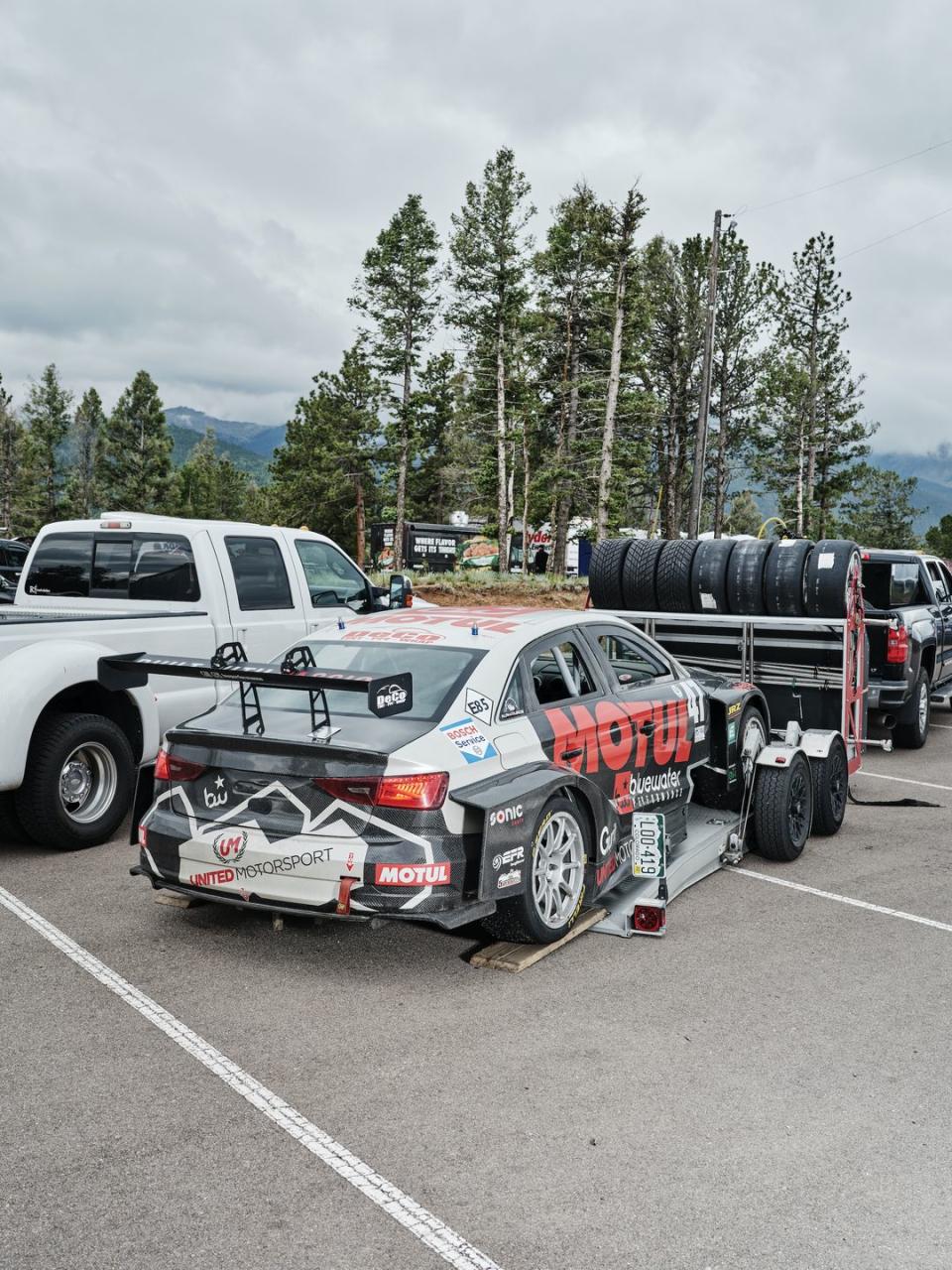
Robb Holland's front-wheel-drive Unlimited Audi A3 ran the short course in a solid 7 minutes, 40.939 seconds. But William Au-Yeung’s nervy Honda Civic went up in 7 minutes, 9.960 seconds to take the unofficial title as quickest front-driver up the mountain. Shawn Bassett’s ailing Z-car coughed its way up in 9 minutes, 19.475 seconds. And pastor Don Wickstrum blitzed up in 6minutes, 59.233 seconds in the Riley. But the over-all quickest run was turned in by Robin Shute in a Wolf open-wheel car at 5 minutes, 55.246 seconds.
What makes Pikes Peak special isn’t how long it has been run or all the various Unsers, Group B rally cars, and all-electric, record-setting VWs. It’s that, if science isn’t enough, it’s wide open to innovation, inference, instinct, and intuition.
The road to the road that winds up Pikes Peak goes through Manitou Springs, a town dotted with small hotels and motels with signs promoting “smoking rooms available” and “420 friendly.” A place where even the bed bugs have antlers. It’s Colorado’s independent, rambunctious, and cantankerous id that leads to its mountainous ego. It’s a place always open to things like Formula Libre—and also bears.
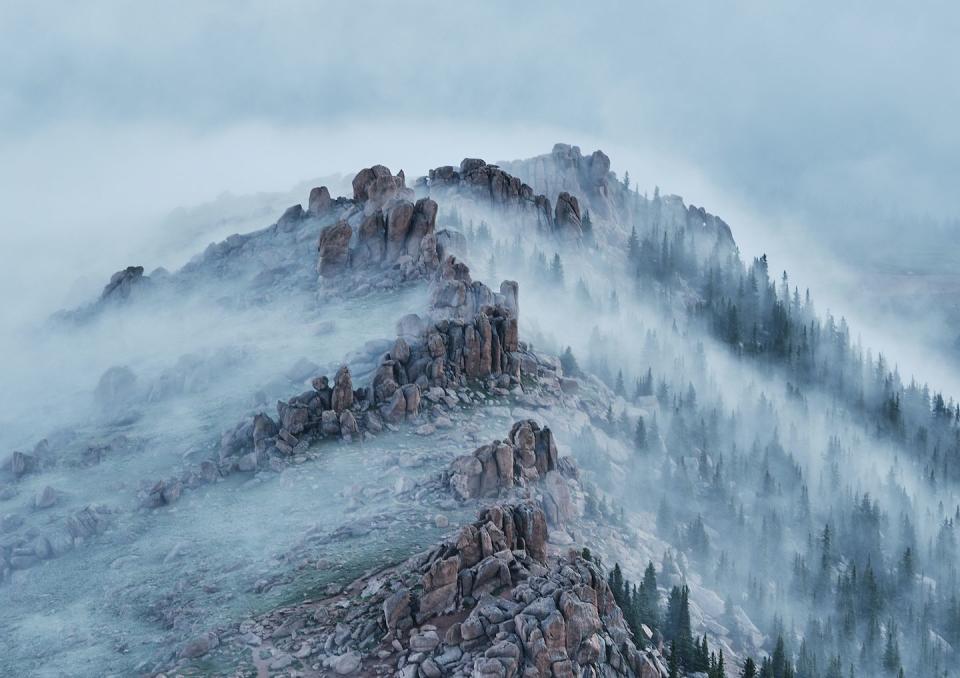
You Might Also Like

 Yahoo Autos
Yahoo Autos 